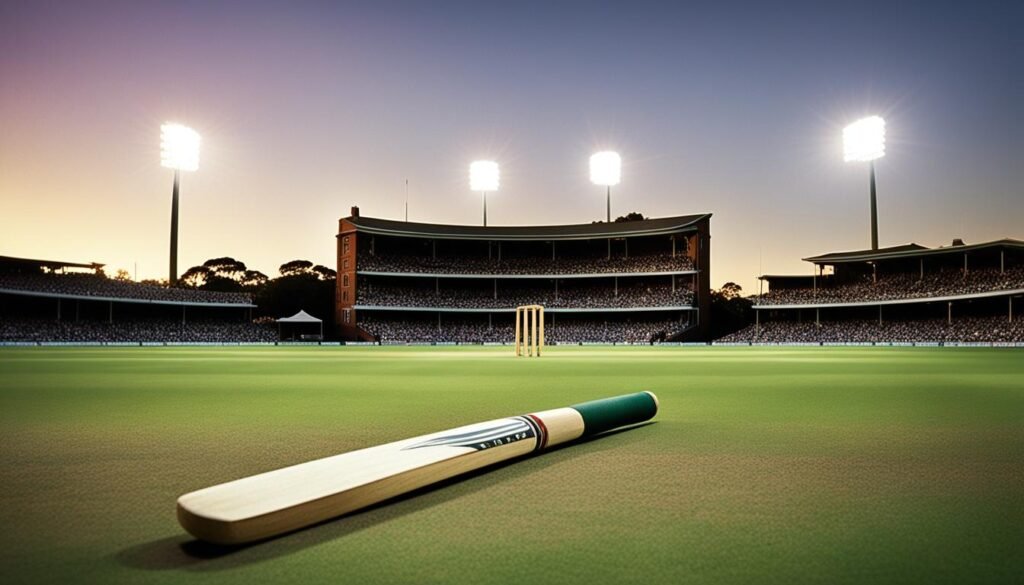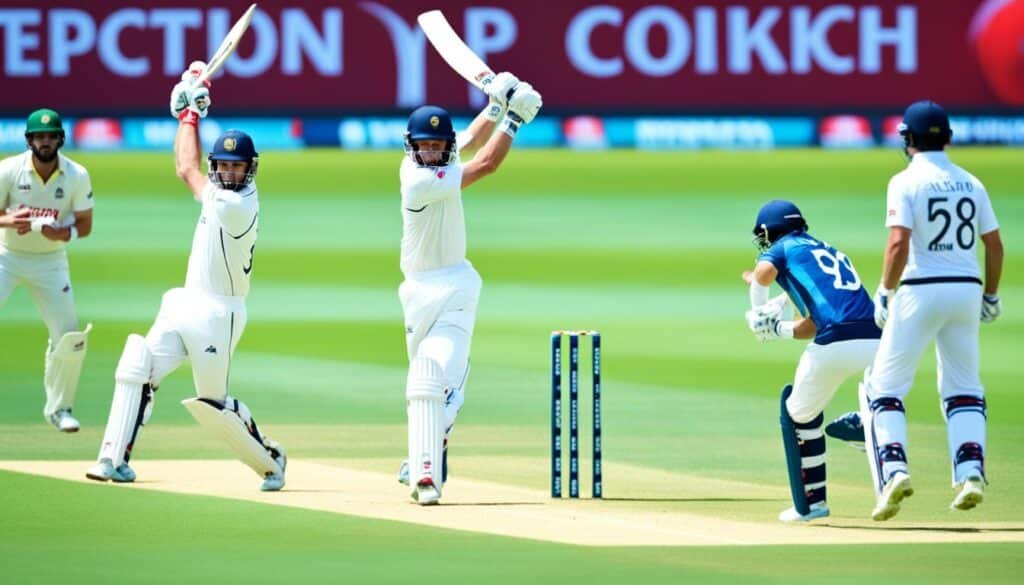Cricket History : Cricket, often referred to as the “gentleman’s game,” has a rich and storied history that spans centuries. From its humble origins in 16th-century England to its status as a global phenomenon, cricket has evolved and witnessed numerous significant moments. Understanding the origins and evolution of cricket is crucial to appreciating the game’s enduring legacy.
The origins of cricket can be traced back to rural communities in England during the 16th century. Initially a rustic pastime enjoyed by shepherds and farmers, cricket gradually gained popularity and became more organized by the 18th century. This period saw the formation of the world’s first cricket club, the Hambledon Club, in 1750, and the establishment of the earliest known laws of cricket.
The spirit of cricket, characterized by fair play, sportsmanship, and respect for opponents, is central to the game’s ethos. Cricket’s intricate rules and gameplay involve two teams of eleven players aiming to score more runs than their opponents while dismissing their batsmen. Scoring runs and taking wickets are essential to winning a cricket match, with various milestones and records reflecting the game’s history and achievements.
Cricket has evolved into different formats over time to cater to diverse audiences and playing styles. Test cricket, the oldest and longest format, stands alongside limited-overs cricket, including One Day Internationals (ODIs) and the fast-paced T20 cricket. The globalization and modernization of cricket have also transformed it into a multi-billion-dollar industry, with international competitions like the Cricket World Cup showcasing the sport’s global impact.
Beyond the game itself, cricket holds significant cultural importance in countries where it is passionately followed. Legendary cricketers like Sir Donald Bradman, Sachin Tendulkar, and Sir Vivian Richards have gained iconic status, while cricket has inspired literature, art, music, and cinema, symbolizing national identity and unity.
Also Read: Master Cricket Techniques for Game Improvement
While cricket faces challenges such as corruption and the balance between tradition and newer formats, it continues to evolve and embrace inclusivity. The growth of women’s cricket and technological advancements have further enhanced the game, ensuring its relevance for generations to come.
Come with us on a journey through cricket’s rich tapestry of history and explore the fascinating moments and events that have shaped the sport we know today.
Key Takeaways:
- Cricket has a rich and storied history dating back centuries.
- Its origins can be traced to 16th-century England, where it was played in rural communities.
- The spirit of cricket emphasizes fair play, sportsmanship, and respect for opponents.
- Cricket has different formats to cater to diverse audiences, including Test cricket, limited-overs cricket, and T20 cricket.
- Cricket has a significant cultural impact and has inspired various art forms.
The Origins of Cricket: An Ancient Pastime
The roots of cricket can be traced back to 16th-century England, where it was originally a rustic pastime enjoyed by shepherds and farmers. The word “cricket” likely derived from the Old English term “cryce” or “cricc,” which referred to a staff or crutch, resembling the early cricket bats.
By the 18th century, cricket had gained popularity and became more organized, leading to the formation of the world’s first cricket club, the Hambledon Club, in 1750. The 19th century witnessed further development in cricket, with the establishment of the Marylebone Cricket Club (MCC) and the publication of the earliest known laws of cricket.
To comprehend the origins of cricket, it is imperative to delve into its historical records from the 18th and 19th centuries. These records shed light on the evolution of the game, capturing its transformation from a simple pastime to a structured sport.
Also Read: Understanding Test Match Cricket Fundamentals
The Hambledon Club: A Pioneering Cricket Institution
“The formation of the Hambledon Club in 1750 marked a significant milestone in cricket history. It became a hub for cricket enthusiasts, who gathered to play and develop the game.”
The Hambledon Club, located in Hampshire, England, is regarded as the birthplace of modern cricket. It was instrumental in the codification of cricket rules, and its members played a crucial role in establishing the sport’s early structure and traditions.
The Marylebone Cricket Club (MCC) and the Laws of Cricket
“The establishment of the MCC and the publication of the laws of cricket in 1788 laid the groundwork for cricket’s future development and standardization.”
As cricket continued to evolve, the Marylebone Cricket Club (MCC) emerged as the custodian of the laws and spirit of the game. In 1788, the MCC published the earliest known laws of cricket, contributing to the formalization of the sport and providing a unified set of rules for players and officials to follow.
The MCC’s enduring influence and commitment to upholding the integrity of cricket remain prominent even in modern times. It stands as a testament to the sport’s rich history and its continuous strive for excellence.
Also Read: Discover the Top Hospitals and Clinics in India for World-Class Healthcare
| 18th Century | 19th Century |
|---|---|
| Sport gains popularity | Establishment of the Marylebone Cricket Club (MCC) |
| Formation of the Hambledon Club | Publication of the earliest known laws of cricket |
| Further development and standardization of cricket |
The Spirit of Cricket: Rules and Gameplay
Cricket is known for its complex yet elegant rules and gameplay. The game is played between two teams, each consisting of 11 players. The objective is to score more runs than the opposing team while dismissing their batsmen. The game involves tossing a coin to decide which team bats or bowls first.
Batsmen score runs by hitting the ball bowled by the opposition and running between the wickets. Each completed run adds to their team’s score.
Bowlers aim to dismiss batsmen through various means. They can hit the stumps, dislodging the bails, or get the batsmen caught by fielders. Other means of dismissal include LBW (Leg Before Wicket) and run-out, where fielders run out batsmen by hitting the stumps with the ball.
The spirit of cricket emphasizes fair play, sportsmanship, and respect for opponents. Players are expected to play the game in the right spirit, adhering to the laws of cricket and displaying exemplary behavior on and off the field.
Also Read: How to Get Free Recharge in Jio, Airtel, Vi, and BSNL
Fair Play and Sportsmanship
“The essence of cricket is its spirit, which incorporates values such as integrity, honesty, and respect for the opposition.”
Fair play and sportsmanship are integral to the spirit of cricket. Players are expected to abide by the laws of cricket and maintain a high standard of conduct during matches. They should accept the umpire’s decisions, respect their opponents, and play the game with honesty and integrity.
Respect for Opponents
A crucial aspect of the spirit of cricket is the respect players show for their opponents. This includes acknowledging good play from the opposition, refraining from offensive language or behavior, and treating opponents with respect and dignity.
Ethics and Spirituality
Cricket, often described as a gentleman’s game, places great importance on ethics and spirituality. Players are expected to conduct themselves with grace, humility, and a sense of fair play, recognizing that the game extends beyond the boundaries of the field.
Upholding the Tradition
As keepers of the tradition, cricketers have a responsibility to uphold the spirit of cricket. By playing the game with honesty, integrity, and respect, they contribute to the continuing legacy of cricket as a symbol of camaraderie and sportsmanship.
Also Read: How to Get Free Unlimited Data

Key Rules in Cricket
| Term | Definition |
|---|---|
| Toss | The act of flipping a coin to decide which team will bat first. |
| Run | The unit of scoring in cricket, awarded when batsmen complete a run between the wickets. |
| Dismissal | The act of getting a batsman out, either by hitting the stumps, catching the ball, or other means defined by the laws of cricket. |
| LBW | Leg Before Wicket, a mode of dismissal when a batsman’s leg obstructs the ball from hitting the stumps. |
| Umpire | An official responsible for making decisions and enforcing the laws of cricket during a match. |
Scoring and Winning: Runs and Wickets
In the game of cricket, scoring runs and taking wickets are the key elements that determine a team’s success. To win a cricket match, a team must score more runs than their opponents within a specified number of overs. Runs can be accumulated through various scoring methods, while dismissals result in the loss of wickets.
There are two main ways to score runs in cricket:
- Hitting the ball and running between the wickets: When the batsman hits the ball, they have the opportunity to run towards the opposite wicket. Each time they successfully reach the opposite end, their team is awarded one run. This running between the wickets allows for multiple runs to be scored in a single delivery.
- Hitting the ball past the boundary: If the batsman manages to hit the ball over the boundary without it touching the ground, they are awarded four runs. If the ball clears the boundary without touching the ground after a direct hit, it is called a six and the team is awarded six runs.
However, scoring runs is not the only aspect of the game. Dismissing the opposing team’s batsmen is equally important. Each time a batsman is declared out, the batting team loses a wicket. The team that successfully dismisses all 10 of the opposing team’s batsmen wins the match.
If the batting team completes their allotted overs without losing all their wickets, the result is determined by the total runs scored. In this case, the team with the highest number of runs emerges as the winner.
Cricket records, such as highest individual scores, fastest centuries, and most wickets taken, hold great significance in the sport. Important cricket matches, like World Cups and Ashes series, mark significant milestones and captivate fans worldwide. These records and matches contribute to the rich history and legacy of cricket, showcasing the skill, dedication, and determination of the players.
| Cricket Records | Important Cricket Matches | Cricket Milestones | Winning Criteria |
|---|---|---|---|
| Most runs in an innings: 400* by Brian Lara | Ashes series between England and Australia | First Test match played in 1877 | Team with the highest runs in allocated overs |
| Most wickets in a career: 800 by Muttiah Muralitharan | Cricket World Cup | Highest individual score: 501* by Brian Lara | Team that dismisses all 10 opposition batsmen |

Evolution of Formats: From Test Matches to T20 Cricket
Cricket has adapted to the changing times by introducing different formats to cater to diverse audiences and playing styles. Let’s take a closer look at the evolution of cricket formats:
1. Test Cricket
Test cricket is the oldest and longest format of the game. Matches can span up to five days, with each team getting two innings to bat. Test cricket is often considered the pinnacle of the sport, testing the skills, stamina, and temperament of players. It is played at the international level and has a rich history of legendary performances and iconic moments.
2. First-Class Cricket
Similar to Test cricket, first-class cricket is played at a domestic level. It follows the same rules and format as Test matches but involves teams representing domestic or regional associations. First-class cricket provides a stepping stone for players aspiring to play at the highest level and showcases the talent pool within a country.
3. Limited-Overs Cricket
In response to the need for shorter matches, limited-overs cricket was introduced. It includes One Day Internationals (ODIs) and different variations of one-day matches. In limited-overs cricket, teams have a fixed number of overs to bat, typically 50 overs per side. This format revolutionized cricket, making it more accessible to a wider audience and bringing a sense of urgency and excitement to the game.
4. T20 Cricket
T20 cricket, the shortest format of the game, has gained immense popularity in recent years. Matches consist of 20 overs per side, with more aggressive batting and fast-paced gameplay. T20 cricket features thrilling performances, big hitting, and innovative strategies. Leagues like the Indian Premier League (IPL) and the Big Bash League (BBL) have become global spectacles, attracting top international players and captivating fans worldwide.
The evolution of cricket formats has provided opportunities for players of different skill sets, increased fan engagement, and expanded the reach of the sport. It has also led to innovative strategies, exciting rivalries, and memorable moments on the field.
Here is a table comparing the different cricket formats:
| Format | Duration | Number of Innings | Overs per Side |
|---|---|---|---|
| Test Cricket | Up to 5 Days | 2 | Unlimited |
| First-Class Cricket | Variable | 2 | Unlimited |
| ODIs | 1 Day | 2 | 50 Overs |
| T20 Cricket | Approximately 3 Hours | 1 | 20 Overs |

The evolution of cricket formats has transformed the sport, catering to the preferences of fans and players alike. From the timeless battles of Test cricket to the high-octane action of T20 matches, each format offers its unique brand of excitement and entertainment.
Globalization and Modernization of Cricket
Cricket, once considered a quintessentially British sport, has transformed into a global phenomenon, captivating fans from all corners of the world. The International Cricket Council (ICC) plays a vital role in overseeing international cricket and ensuring a fair and competitive playing field.
One of the pinnacle events in the cricket calendar is the Cricket World Cup, held every four years. This prestigious tournament brings together the best cricketing nations, showcasing their skills and passion on a global stage.
The globalization and modernization of cricket have paved the way for its commercialization. Through lucrative broadcasting deals, sponsorship agreements, and endorsement opportunities, cricket has evolved into a multi-billion-dollar industry, attracting investments from various sectors.
This globalization and modernization have not only expanded the reach of the sport but have also had a profound impact on societies and economies. Cricket serves as a powerful vehicle for cultural exchange, fostering connections between diverse communities and creating a shared sense of identity.
“Cricket is a fantastic vehicle through which society can express itself.” – Tom Harrison
As the sport continues to evolve, these global collaborations and cross-cultural interactions will shape its future, further propelling cricket into new frontiers of excitement and engagement.
Cultural Significance of Cricket
Cricket’s cultural impact extends far beyond the boundaries of the playing field. In countries where cricket is passionately followed, it has become deeply ingrained in the fabric of society, inspiring literature, art, music, and even cinema. This revered sport has given rise to iconic figures such as Sir Donald Bradman, Sachin Tendulkar, and Sir Vivian Richards, who have achieved legendary status and garnered immense admiration from fans across generations.
Cricket’s ability to bring people from diverse backgrounds together is a testament to its cultural significance. It has the power to foster a sense of national identity and unity, transcending boundaries and creating shared experiences that go beyond the realm of sport. From cricket matches filled with enthusiastic spectators to the vibrant traditions and rituals associated with the game, cricket has become an integral part of the social tapestry of these cricket-loving nations.
“Cricket has the power to unite people, regardless of their backgrounds, and create a shared sense of belonging.” – Sir Garfield Sobers, former West Indies cricketer
Cricket’s cultural impact extends beyond its native countries, with the sport gaining a global following. As cricket continues to capture the imagination of fans worldwide, its influence on various aspects of culture remains undeniable.
| Famous Cricketers in History | Nationality | Remarkable Achievements |
|---|---|---|
| Sir Donald Bradman | Australian | Test batting average of 99.94 |
| Sachin Tendulkar | Indian | Most international runs and centuries |
| Sir Vivian Richards | West Indian | Destructive batting style and multiple World Cup victories |
Challenges and Future Prospects of Cricket
Cricket, being one of the most popular sports globally, faces several challenges that require attention and innovative solutions. These challenges encompass various aspects that impact the future of the sport, including corruption, player workload, and the balance between traditional and newer formats.
Corruption has been a persistent issue in cricket, threatening the integrity of the game. Measures need to be implemented to combat match-fixing, spot-fixing, and other forms of malpractice to preserve the fair and honest nature of cricket.
Player workload is another concern that arises from the hectic schedules of international cricket. The demand for players to participate in multiple formats and various competitions can lead to fatigue and burnout, potentially affecting their performance and overall well-being. Striking a balance between giving players adequate rest and ensuring their availability for important tournaments is crucial.
The expansion of franchise-based leagues has brought financial success and widespread popularity to cricket. However, concerns have emerged regarding player fatigue and the commercialization of the sport. It is essential to find a delicate equilibrium where the financial benefits of these leagues coexist harmoniously with the well-being and sustainability of the players.
Despite these challenges, cricket remains resilient and adaptable. It continues to evolve to meet the demands of a changing world and capture the imagination of fans across the globe. The sport’s future prospects are bright, with women’s cricket playing a pivotal role in its growth and diversification.
Women’s cricket has experienced significant growth in recent years, garnering increased attention and support. Several countries have made significant strides in developing their women’s cricket teams and infrastructure. The inclusion of women’s cricket in major tournaments and the establishment of professional leagues have proven instrumental in providing opportunities for female cricketers to showcase their talents and inspire future generations. The future of cricket looks promising with the continuous rise of women’s cricket, ensuring inclusivity and diversity within the sport.
Cricket enthusiasts and stakeholders must address the challenges faced by the sport while embracing its potential for growth. By preserving the integrity of the game, prioritizing player well-being, and empowering women in cricket, the future of this beloved sport can be shaped for the better.
Technological Advancements in Cricket
Technology has revolutionized the world of cricket, bringing about significant advancements that have enhanced the overall experience for both players and spectators. From aiding match officiation to providing valuable insights, these innovations have shaped the way the sport is played and enjoyed today.
Innovations in Match Officiation
The introduction of advanced technologies in match officiation has significantly improved decision-making, reducing controversies and ensuring fairness on the field. Three key innovations stand out in this regard:
-
- Hawk-Eye:

Hawk-Eye is a ball-tracking technology that accurately predicts the path of the ball, helping umpires make crucial decisions regarding LBW (Leg Before Wicket) appeals or determining if the ball hit the bat before being caught by the wicketkeeper or fielders. This technology uses multiple camera angles to create a trajectory of the ball’s path, taking into account factors such as bounce, spin, and impact on the pads.
-
- Snickometer:
The Snickometer uses a combination of audio and visual data to detect whether the ball has made contact with the bat or any other object, such as the pads or gloves. This technology helps umpires determine if the batsman has edged the ball, providing a more accurate decision when it comes to catches and appeals.
-
- UltraEdge:
UltraEdge is another technology that assists match officials in determining if there was any contact between the ball and the bat. It utilizes real-time audio and video analysis to detect tiny deviations in sound waves caused by the bat hitting the ball, providing vital evidence for umpires to make accurate decisions.
These innovations have not only improved the accuracy of decisions but have also added an extra layer of excitement and transparency to the game.
Enhancing the Spectator Experience
Technology has also played a crucial role in enhancing the overall cricketing experience for fans. Visual enhancements and data-driven insights have transformed how spectators engage with the sport:
“Innovation and technology have opened up new dimensions in cricket, allowing fans to experience the game in ways unimaginable in the past.”
-
- Virtual Reality (VR):
Virtual Reality has revolutionized the way fans consume cricket, providing immersive experiences that transport them to the heart of the action. With VR, fans can witness matches from different camera angles, experience the intensity of the game, and even feel like they are present on the field.
-
- Player Tracking:
Player tracking technologies have enabled fans to gain deeper insights into the performance of their favorite cricketers. With data on player movements and statistics, fans can analyze the game in real-time and gain a better understanding of the strategies employed by teams and players.
-
- Data Visualization and Analytics:
Data visualization tools have made cricket more engaging by presenting complex statistics and match analysis in a visually appealing and easily understandable format. Infographics, charts, and graphs provide fans with a richer understanding of player and team performances.
Also Read : Master Cricket Techniques for Game Improvement
These technological advancements have transformed cricket into a more interactive and immersive experience, allowing fans to feel closer to the game than ever before.
| Innovation | Function |
|---|---|
| Hawk-Eye | Accurate ball-tracking and trajectory predictions |
| Snickometer | Detects edges and contact between ball and bat |
| UltraEdge | Identifies contact between ball and bat using audio and video analysis |
| Virtual Reality (VR) | Provides immersive experiences for fans |
| Player Tracking | Offers real-time insights into player movements and performance |
| Data Visualization and Analytics | Transforms complex cricket statistics into easily understandable visuals |
These technological advancements are proof of cricket’s continuous evolution, ensuring the sport remains dynamic, engaging, and fair for players and fans alike.
Conclusion
Cricket’s enduring legacy lies in its ability to transcend boundaries, unite diverse cultures, and inspire generations of fans worldwide. With its rich history, strategic nuances, and global impact, cricket has emerged as a symbol of camaraderie, competition, and the pursuit of excellence.
Through the power of cricket, players and spectators alike witness the values of sportsmanship, fair play, and respect in action. The sport emphasizes the importance of integrity, teamwork, and perseverance, setting a shining example for athletes in all disciplines.
As we reflect on the remarkable journey of cricket, we can appreciate its ability to bring people together, foster a sense of belonging, and create unforgettable memories. Cricket’s enduring legacy is not limited to the boundaries of the playing field; it extends to the hearts of millions, leaving an indelible mark on the sporting world.
FAQ
Q: What is the history of cricket?
A: Cricket has a rich history dating back to the 16th century in England, where it was originally a bat-and-ball game played in villages.
Q: How did cricket evolve into an international sport?
A: Over time, cricket spread to other countries through colonialism, and the first international cricket match was played between Australia and England in 1877.
Q: When did South Africa, Pakistan, and Sri Lanka start playing cricket?
A: South Africa made its Test debut in 1889, Pakistan in 1952, and Sri Lanka in 1982, becoming crucial members of the International Cricket Conference (ICC).
Q: What is the significance of different forms of cricket such as Test, ODI, and T20?
A: Test cricket is the oldest and most traditional form, while One Day Internationals (ODIs) and Twenty20 (T20) matches cater to shorter attention spans and faster-paced games.
Q: How has the game’s rules and governance evolved over time?
A: The Imperial Cricket Conference, later renamed the International Cricket Conference, has been instrumental in setting standardized rules and regulations for the sport worldwide.
Q: Why is cricket more than just a sport in many countries?
A: In countries like India, Australia, England, and the West Indies, cricket holds cultural significance and is deeply ingrained in the national identity.
Q: What role do domestic cricket leagues play in the development of the sport?
A: Domestic leagues act as breeding grounds for talent, offering players a platform to showcase their skills and eventually make it to the national team.
Q: What is the history of cricket?
A: Cricket has an extensive history, with origins dating back to the 16th century in England. It has evolved over the years to become one of the most popular sports worldwide.
Q: How has cricket developed in South Africa?
A: Cricket in South Africa has a rich history, with the sport being played as early as the 18th century. It has since grown to become a significant part of the country’s sporting culture.
Q: What are some key moments in the history of cricket in Pakistan?
A: Pakistan has a strong cricketing tradition, with notable achievements such as winning the Cricket World Cup in 1992 and producing world-class players like Imran Khan and Wasim Akram.
Q: How has cricket evolved in Sri Lanka?
A: Sri Lanka has made remarkable progress in cricket, especially in the international arena. The country has produced legendary cricketers like Muttiah Muralitharan and has won major tournaments like the ICC Cricket World Cup in 1996.
Q: What is the significance of cricket as a form of sport?
A: Cricket is not just a game but a shared passion for millions worldwide. It has various formats such as Test matches, One Day Internationals (ODIs), and Twenty20 (T20) matches, catering to different audiences.
Source Links
- https://www.ludisanalytics.com/blog/cricket-a-gentlemans-game-with-a-rich-heritage
- https://medium.com/@kanchan45ti/exploring-the-essence-of-cricket-a-sport-that-unites-nations-db980d8c1bcc
- https://vocal.media/education/the-top-intricate-history-of-cricket-journey-through-time




